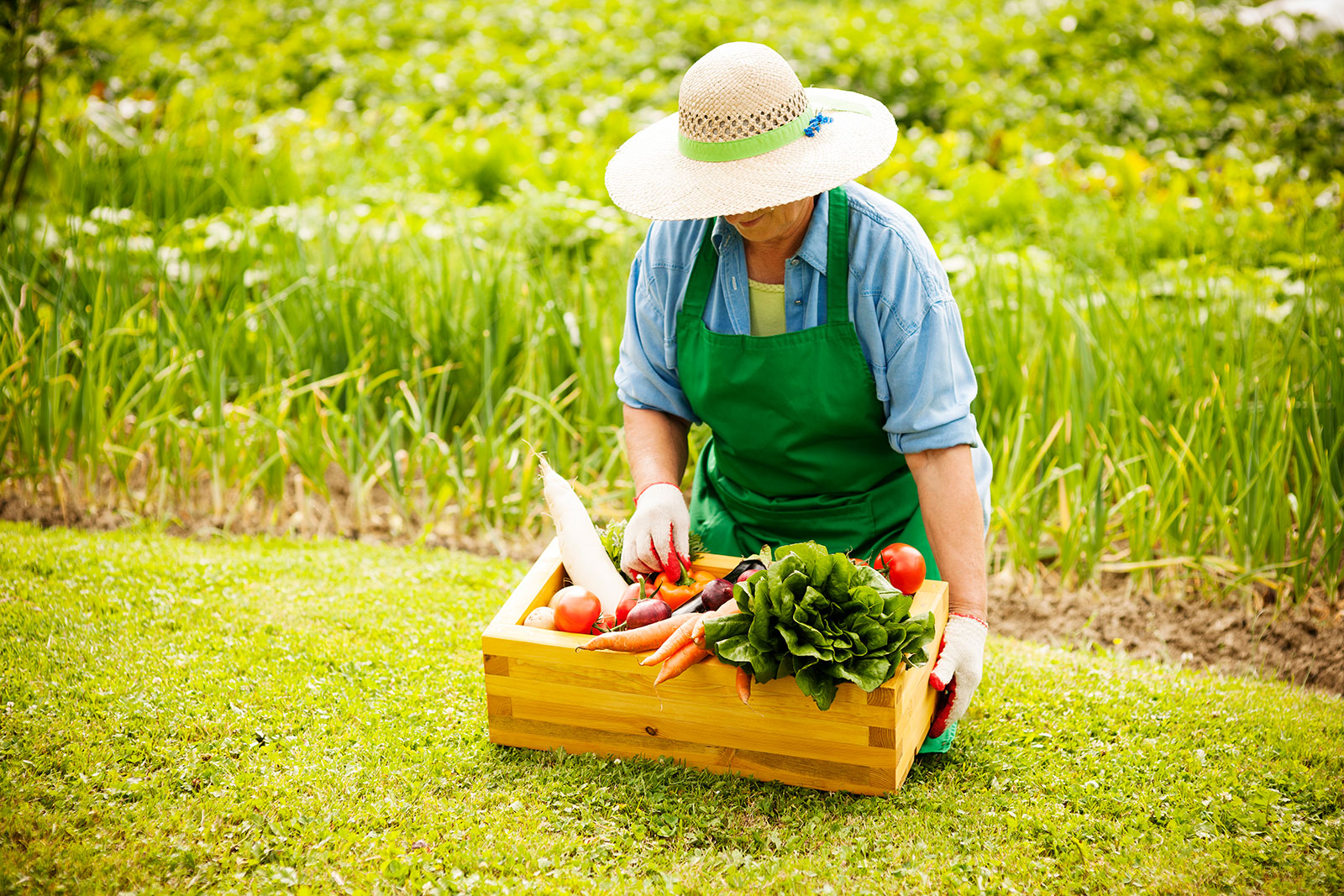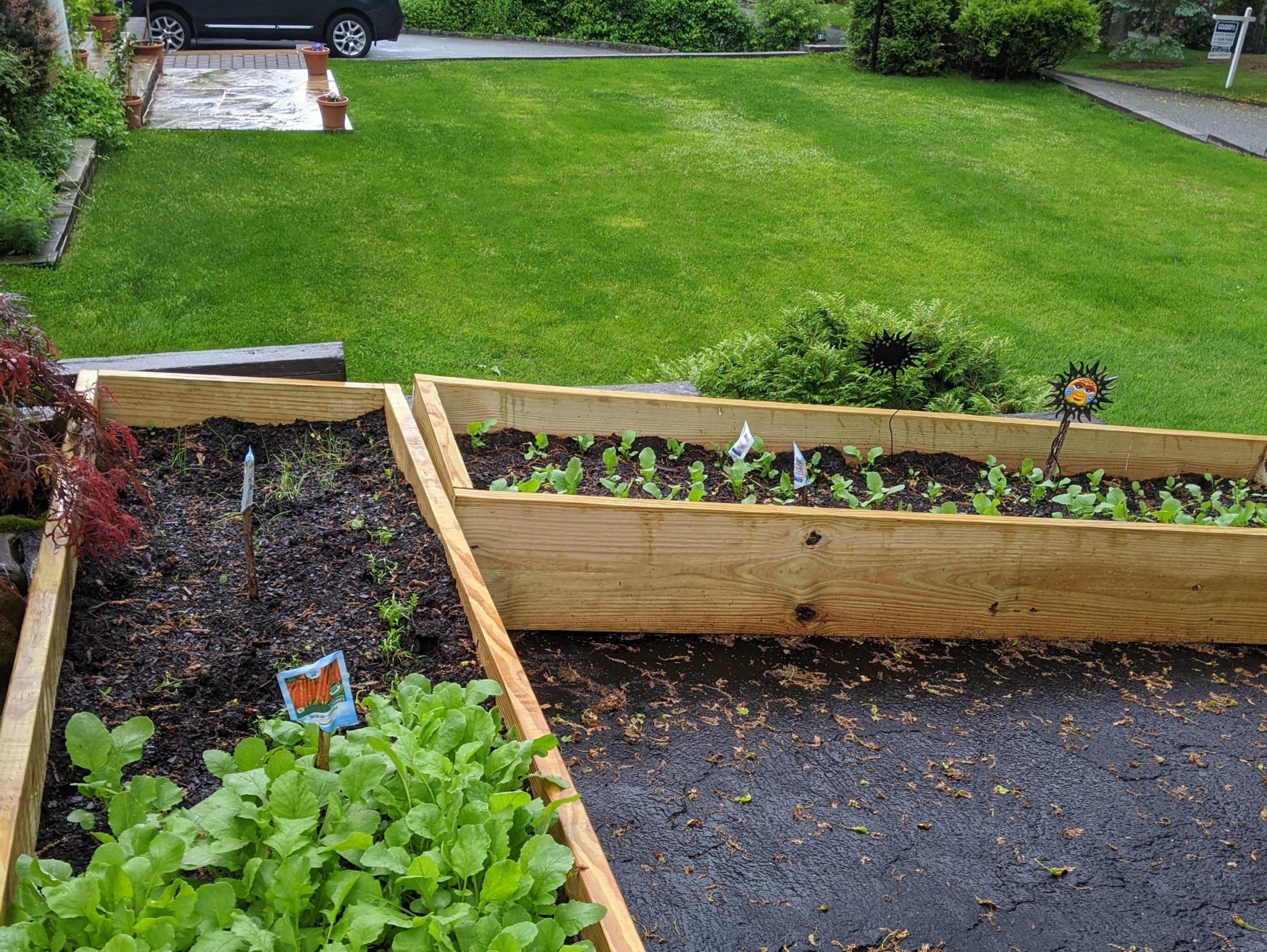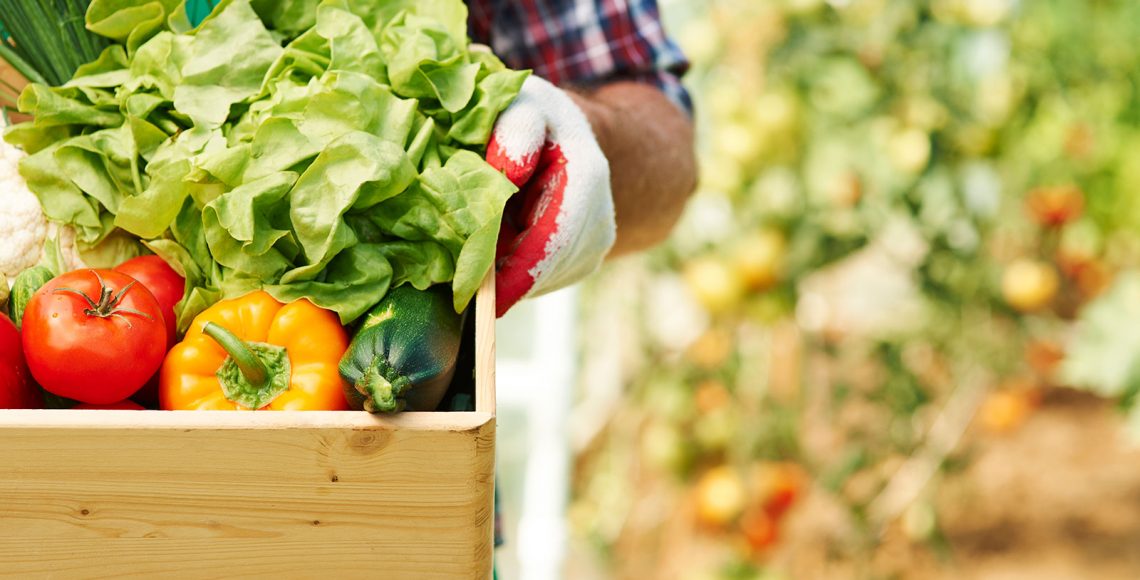Fresh Nutrition – Designing A Produce Garden
We are living through interesting times.The pandemic has us sheltering in place and a large proportion of our communities are home a whole lot more than we used to be. Sheltering in place disrupts our normal schedules, distances us from our family, friends and co-workers. This isolation and finding new ways to adapt to it, forces us to refocus and realign our lives.
A new study from local market research firm Scarborough reveals that of the nearly 164 million homeowners in the United States, nearly half (49 percent) gardened in the past 12 months.

“Backyard gardening can inspire you to take an interest in the origins of your food and make better choices about what you put on your plate. When you grow your own food, you savor it more because of the effort it took to get to the table.”
Dr. Helen Delichatsios, an internist at Harvard-affiliated Massachusetts General Hospital
Garden-To-Table
The nature of the American food system is that grocery store produce has often been grown hundreds of miles away, meaning it can be days between harvest and your table. This process results in the quality of the produce often being compromised.
The American Dietetic Association has a new study published in the journal shows that a low-income family would have to devote 43 to 70 percent of its food budget to fruits and vegetables to meet the 2005 Dietary Guidelines, which recommends five to nine servings of fruits and vegetables a day. “Most Americans fall short of the recommended servings,” says Milton Stokes, a registered dietitian and a spokesman for the American Dietetic Association.

Fresh fruits and vegetables tend to be more expensive than processed foods. Fresh produce has a short shelf life, which means that it spoils and therefore can’t be bought in bulk and stored in the same way processed or preserved foods can.
With people being more and more aware of the need to feed their families healthy food, an unprecedented demand for local and fresh food emerges. The National Gardening Association research shows that over the last decade there has been a 38% increase in people actively trying to grow food at home. This means that currently, 48 million households are trying to grow food at home and 60% of the households are highly interested in producing their own food.
Enjoy The Benefits Of Having Your Own Garden
Not only does gardening provide you and your family with fresh and healthy food, it also builds your body strength, promotes sleep, and helps you maintain a healthy weight. Here are some other reasons to build your own edible garden:

Improve your health. Consuming more fresh fruits and vegetables is one of the most important things you can do to stay healthy. When you pick vegetables right from your garden, the vitamin content will be at its highest. Also, you are reducing the risk of eating vegetables that contain harmful chemicals–you know exactly what you’re eating. In addition, getting kids involved in the gardening process will make it more likely for them to try the vegetables.
Save money on groceries. One of the benefits of enjoying garden vegetables is a reduced monthly food bill. You can grow organic vegetables for a fraction of the cost in the stores.
Get outdoor exercise. The Centers for Disease Control and Prevention (CDC)Trusted Source says gardening is exercise. Activities like raking and cutting grass might fall under the category of light to moderate exercise, while shoveling, digging, and chopping wood might be considered vigorous exercise.Either way, working in a garden uses every major muscle group in the body. This fact won’t surprise anyone who’s woken up sore after a day of yardwork.
Studies have found that the physical exertion of working in a garden may help offset both age-related weight gain and childhood obesity. And researchers at the University of Pennsylvania reported that people who garden are more likely to get a solid 7 hours of sleep at night.
Gardening is a natural stress reliever. Being outside in the fresh air and sunshine can improve mood and make you feel rejuvenated and overall happy. Growing your own produce also gives you a great sense of accomplishment.
Start Your Own Edible Garden
There are a lot of ways to start your own edible garden and it usually depends on the available square footage you have or the sunlight conditions in your space. Whatever the reason, there are several gardening options available for you.

Backyard Gardens
This is the growing of food on home property. Its produce is mostly shared among friends, family, and neighbors as it typically leads to a surplus in the harvest. The food can also be stored and preserved. Backyard gardens are beneficial to communities as neighbors can share each other’s backyard and employ different methods of farming leading to better yields.

Rooftop Gardens
Since urban areas have limited space, it does not mean agriculture cannot be practice. This is where rooftop space comes in as they can easily be utilized for cropping vegetables, fruits, and herbs. The advantage of rooftop gardens is that it can aid in reducing urban heat island as well as improving the air quality. Aside from these, rooftop gardens can be used to beautify recreational facilities.

Vertical Gardens
These are just tightly packed plantings that are hung on a wall rather than planted in pots or in the ground. In a small-space garden, it’s a clever way to get more greenery into a really tight area. It’s also a smart way to hide an unsightly fence. One of the easiest ways to grow food vertically is to secure window boxes or individual pots to fences and walls. To really stand out, paint the containers in bright colors before they are hung. Plant with compact herbs, vegetables, and strawberries.

Container Gardens
This is ideal for those with little or no garden space. Gardeners limited to a balcony, small yard, or only a patch of sun on their driveway can produce a wide variety of vegetable crops in containers. Basil, chives, thyme, and other herbs also are quite happy growing in pots, which can be set in a convenient spot right outside the kitchen door.
Raised Bed Gardens
A raised bed garden is when a planting bed sits on top of your existing soil. It can be anywhere from just a few inches tall to waist-high (or higher), and can be made of many different materials. Usually, there’s room left around the outside of each bed so you can walk around it (not in it), which allows the soil to stay loose and fluffy instead of compacted. That’s important, since roots grow best when there’s room for air and water to move easily through the soil.
Community Gardens
This is a shared, semi public space where people in the surrounding neighborhood share the work and harvest of maintaining a garden space for growing fruits, vegetables, flowers. One community garden can consist of several raised beds on an empty lot and neighbors can come by each day to attend the plants and pick food to eat. A different community garden can be in the yard of a house of worship, and the harvest supplies the soup kitchen and food bank.
Street Landscaping
This is the landscaping of streets for different uses such as community gardens, which are tended to by the people in the neighborhood. They not only make the streets look beautiful but also purifies the air creating a clean environment. Since they are primarily located along the street, their added advantage is their capability of reducing urban stormwater runoff.
Smart Gardening
You can simplify your gardening with the power of smart watering with a system that can automatically program itself based on real-time local weather data collected from the Internet to create an optimized watering schedule for your yard. One particular brand is Blossom Smart Watering Controller. This means that on the sunniest, hottest days, Blossom will apply extra water to replenish dry soil. On cooler, less sunny days, Blossom adjusts to irrigate less. If measurable rain is in the weather forecast, Blossom skips watering for that day. The result is an automatically adjusted irrigation plan tailored for your lawn and garden that can be monitored from anywhere at any time from your smartphone or tablet over this Wi-Fi enabled system.
Another tool, a moisture censor kit, can be added to supplement these functions. SMRT-Y Soil Moisture Sensor is an irrigation controller is directly linked to the absolute moisture requirements of a site’s vegetation. When the sensor detects dry conditions, the next scheduled watering cycle is allowed. If a site’s soil moisture level is above the threshold, the irrigation cycle is suspended.

Gardening experts also rely on the USDA/Sunset Plant Hardiness Zone maps or seed packets when planning a garden. These sources help growers determine which plants will grow in their geographic location. Hardiness zones indicate how well a plant will survive in a variety of growing conditions relative to heat, cold, and rainfall in the area.
Traditionally, we grow edibles in areas that receive 6-8 hours of full sun, thus, limiting one’s growing options to a relatively small area in many landscapes. What about using your entire landscape to grow food instead? Take some time to observe your yard. Is there a place that never seems to get any sun? Is there an area that has great morning sun, then shaded in the afternoon? How about an area that gets lambasted by the western sun? These areas are known as microclimates: areas that differ from the climate of the surrounding area.
Grow Anywhere With The Help Of Technology

There is a technology called Micro-Climate Technology. This technology helps gardeners grow anywhere…Indoor, Outdoors, Full sun, or Full Shade. One company, Agriscaping has been exclusively using micro-technology mapping. They established 6 basic microclimate categories, indicated by the letters A through F. Each letter represents a different microclimate zone according to the amount of sunlight it receives, which determines what plants will grow in that space. For example, Zone A receives the morning sun and is shaded in the afternoon. Zone B is known as the traditional zone since it receives sun throughout the day. For those shaded areas of your yard, Zone F is the microclimate for that space. You can have your property’s microclimates mapped out through this technology. In addition, you will learn what plants flourish in the specific microclimate with your personalized color-coded zone chart.
Knowing what to grow and where to grow in your microclimates will help extended success in your garden. Gardening invites you to get outside, interact with other gardeners, and take charge of your own need for exercise, healthy food, and beautiful surroundings.
Fun Fact
Our founder Alon, is one of the 48 million households who decided to grow their own food recently.
These are pictures of him and his family building their garden beds.

Their seedlings hatching

The crop from their garden

Final Thoughts
If you’re digging, hauling, and harvesting, your physical strength, heart health, weight, sleep, and immune systems all benefit. Those are just the physiological outcomes of gardening. It also cultivates feelings of empowerment, connection, and creative calm.
Start planting your way to a healthier you!


